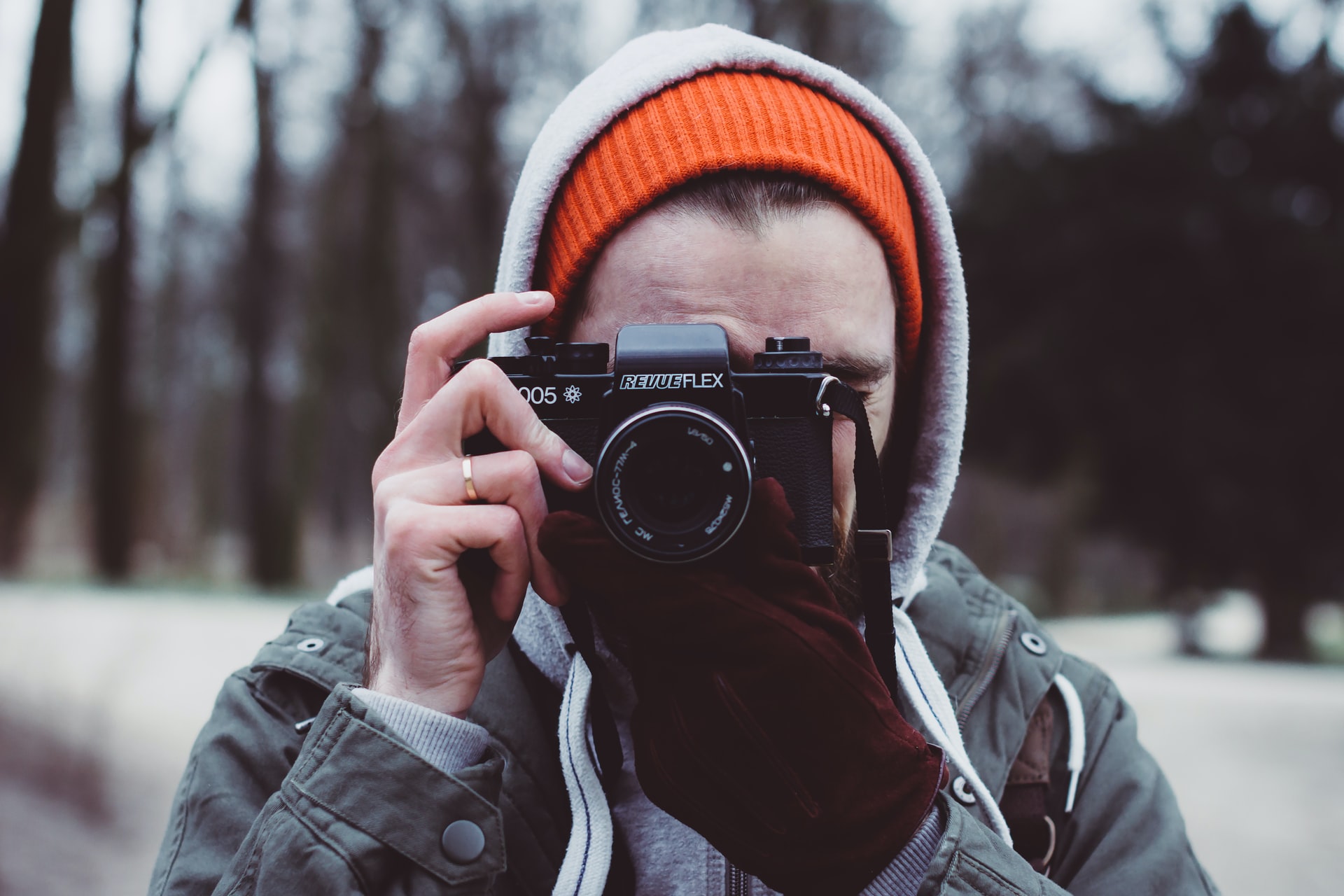What is Commercial Photography
Commercial photography is the use of your photography skills to promote a product or service. It’s also called lifestyle photography, product photography, or fashion photography. Your definition of commercial photography depends on the client and industry you are working for.
As someone serious about photography, with a desire to make a living out of it, you may have spent some time in creating your own online portfolio by testing different types of photography. As a photographer, there are multiple ways to test what you’re good at depending on your skills and interests. The goal is to find what you love.

In photography, not all fields pay equally well. Commercial photography is an exception. With this article, I am going to discuss if commercial photography is right for you and what’s involved in building a photography portfolio from scratch. I will also show you how to maximize your earnings as a commercial photographer.
Commercial photography can appear confusing at times. It’s a photography service which is used to sell or promote a service or product.
Commercial photography isn’t limited to taking architectural or food photos. It can also be so many more things, depending on what clients want from you.
Today, products are sold both offline and online. The growth in online sales is the reason why a lot of commercial photography is done with Instagram or other social media channels on top of mind. These photographs can be used across websites, on multiple social media channels and for print and digital ads.
The photographs can represent anything the customer wants to communicate visually with their audience.
Who is a Commercial Photographer?
A commercial photographer may work alone or work as part of a team. When you’re working alone you will be given a brief on how best to bring alive the client’s product. If working in a team, under an art director, the art director may give you a conceptual idea regarding the photoshoot that’s closely aligned with the client’s branding strategy and target audience. As a photographer, you need to create photos based on this directive as part of the team.
What Are the Different Types of Commercial Photography?
There are several different examples of commercial photography including product photography, lifestyle photography, photography that appears on digital brochures, on product packaging, on brand’s social media channels and more. There’s real estate photography, aerial photography captured with the help of drones and more.
Since it’s so vast, clearly there are a number of areas where you can choose to specialize in.
How Much do Commercial Photographers Make?
As a commercial photographer there are several niches to choose from. Commercial clients arrive with a significant budget that’s enough to focus on their content marketing, and sales objectives.
There’s money to be made. This is enough reason to focus on commercial photography. You’re always working with high-paying clients. This isn’t always the case with other photography fields.
Another factor is geography. Your salary as a commercial photographer varies depending on the regions you work in. A photographer working in a major US city will earn more depending on the cost-of-living costs associated with the place. Comparatively, someone living outside the city will earn less.
Do a search for commercial photography salaries to better understand the salaries in your region. A good commercial photographer also gets to travel to different places if the images the client needs have to be from different geographies. Also, as a commercial photographer you can also have products mailed out to your studio. This gives you better control over the lighting and the freedom to work at your own pace.
How Should You Price Your Commercial Photography?
Once you have an idea of the rates, you’re better placed to charge what you like. The photography invoices should reflect the following:
- The hourly rate
- The equipment rental fee for the gear you are working with
- Fees for any support staff
- Licensing fees per image
- Post product fee for images
If you send clients an itemized billing using an online invoicing software, they’re easily able to visualize how you arrived at the final price and can see if the pricing is fair based on the work, your experience and the equipment used. That’s a skill you must master.
It’s possible that as a beginner you underquote on a project, so much so that you end up losing money on the work you undertook.
As a beginner photographer you may not have thought everything through. After you receive the brief, consider all the different things you need to create the photos clients want.
Are you renting a studio? Plan on the hours you will need in the rented studio.
Are you using a better camera or special lighting?
Are you renting a drone?
If you answer these and more questions correctly, you will be able to arrive at a rate the client will be happy with and you can turn a healthy profit on.
Plan if you need assistants or you can do everything on your own. This extends to post-production too.
The list goes on. You need to budget for unforeseen expenses and keep track of everything you’re going to spend.
Since there are so many niches you can specialize in, and considering the vastness of commercial photography, you may need multiple portfolios to shine in this field. I am not asking you to be a generalist.
Let me give you an example.
A client who’s in the food space running a restaurant won’t be too excited with your portfolio on architectural photography. In much the same way a car dealership isn’t going to be interested in food photographs you shot.

The best advice is to develop expertise in two or three areas of specialization and build out a photography portfolio in each of them.
At the same time, this bears repetition. Just because I told you so, you need not go out and create a portfolio for every category you can think of. It will become difficult for you to stand out, if you do so.
Second, just because you have plenty of photographs you don’t need to make them part of your portfolio. The key is to keep things simple by keeping the best photos in your portfolio.
About 20 images is enough for a portfolio.
You can always use your social media channels, choose to do freelance work on sites like Designhill, plus use your photography site to showcase your portfolio.
Define Commercial Use of Photos
Commercial use of an image relates to how you can use the image in advertising or for promoting and selling a product or service. For each image, you must specify how the buyer can use the photo, specifying usage details with the help of a usage license. When licensing photos there’s also a licensing fee involved with each use-case. Your client can expand the license for different uses for longer periods by paying you a higher fee.
What to Do as a Commercial Photographer?
The schedule will depend on the industries you work in and the clients you have.
1. Pitch Clients
One skill you need to build yourself as a commercial photographer is the ability to pitch clients. You need a client list for that. You should expect to spend some time doing cold calling every day to land potential clients or you can also use social media to find more clients.
2. Develop a Deeper Understanding of the Client and the Project
You need to dive deep into the needs of your client. This is only possible when you’re asking plenty of questions.
The more you understand the client, their unique goals and their products, the greater your success as a commercial photographer. Once you land the client, you need to take time to understand what the goal is. Plus, you can consider using project management tools to accomplish all your client’s goals.
You may need to build a questionnaire off of which you can start asking questions to clients whenever you land a new one. You will find instructions for photos they want from you, and better understand what their campaign goals are.
3. Come up with Conceptual Ideas
You may get clear and detailed directions from the client. If you are approaching a new business, you will be responsible to set the mood for the photoshoot and use a range of visual ideas for the clients.
4. Taking Photos
For creating the best photos for your clients, the important thing is to remember that you need to sell a product or service. Being clear on these goals helps you create a high-end look for the photos and helps you set up the lighting for the studio.
Understanding the directive will also help you understand if the client wants natural lighting.
5. Post-Production Work
The amount of time spent on a photo editor depends on the final look you want to create for the photos you are taking.
Commercial photos for Instagram may not require editing as something that needs printing. The goal of commercial photography is to make money for the clients.
Use presets to produce the look the clients are looking for. The final product should be polished. You may be able to speed up this a lot by using presets. These presets are a one-time work and you use them multiple times to produce a signature look again and again.
Start Small
As a photographer you may want to land the biggest clients even as you start.
But it’s almost impossible to land these clients with no proven skill set. Even if you have the skills there are tons of other things to meticulously plan about including post production and photo licensing.
Big companies generally choose agencies for this. If you keep on trying to land these clients, you may fail at it.
When starting your business, you will notice that almost every store you go to, every brand you come across on an advertisement— uses commercial photography in some form.
That’s why these businesses are your ideal clients. Go to your local restaurant to find out about whether they need promotion and advertising.
Since this is a local business around you, you know their products and also know their customers. It will be easy to understand what their needs are and turn them into photos.
Follow the Brief
As a creative professional, it’s a good thing that you want to do things creatively and put your natural sense of art into it.
This means you need to invest into creating a personal style.
In commercial photography, your artistic side and creativity is used to help envision your client’s vision.
To that end, you get a brief telling you what you need to do. A brief is a set of guidelines where you can add your input to or something that you must follow.
A fixed brief can often be the source of frustration but this can avoid potential conflicts. A clear brief helps you plan and produce effective content minimizing hassles.
Always ensure you develop a clear understanding of what clients want and then go on delivering on those expectations. This helps you deliver straight.
About Guest Author: George Mathew
George is a marketer and writer at Kamayobloggers.com – a site he started to share cutting edge marketing insights.









